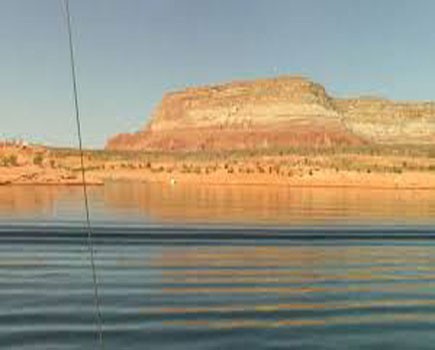Business name : Lake Powell Yacht Club
The City of Page is one of the youngest communities in the United States. It is located in northeastern Arizona, approximately five hours north of Phoenix and five hours east of Las Vegas.The town began in 1957 as a housing camp for workers building the Glen Canyon Dam. In 1958, some 24 square miles of Navajo land were exchanged for a larger tract in Utah, and “Government Camp” (later called Page in honor of Bureau of Reclamation Commissioner John C. Page) was born.
At first, the frontier community consisted of temporary homes and house trailers, with a few streets carved out of the sandy, rocky slopes. Gradually, permanent homes were constructed and churches sprang up along Lake Powell Boulevard. Twelve religious denominations were granted building sites; today, that portion of Lake Powell Boulevard is affectionately called “Church Row” by local residents. During the seven years required to construct the dam, Page was a federal municipality. It became an incorporated town on March 1, 1975 and is now home to more than 9,000 people.
The enormous task of building the Glen Canyon Dam began in 1956 and was completed in 1963 as part of the U.S. Congress’s authorization to the Bureau of Reclamation to build a dam on the
The site near Manson Mesa and present-day Page was chosen to build Glen Canyon Dam for several reasons: the area forming the basin could contain an immense amount of water; the canyon walls and bedrock foundation were strong enough to support the high dam; and a large source of good sand and rock was available at nearby Wahweap Creek. The 700-foot wall of concrete was erected with almost ten million tons of concrete and seven years of extraordinary effort. It took 17 years for Lake Powell to reach “full pool.”
Today, Glen Canyon Dam and Lake Powell fulfill the goals of water storage and hydroelectric power generation for the southwestern states. They also comprise a major recreational area that is visited by more than 3 million people annually.
Lake Powell is named for John Wesley Powell, a colorful, one-armed explorer and Civil War veteran who led nine companions on the first scientific expedition of the Colorado River in 1869. Powell and his men embarked on a remarkable journey that covered almost 1,000 miles through the uncharted canyons and wild rapids of the Colorado River. This expedition, followed by a second one in 1871 which produced the first maps of the region, changed the future of the American West forever.



